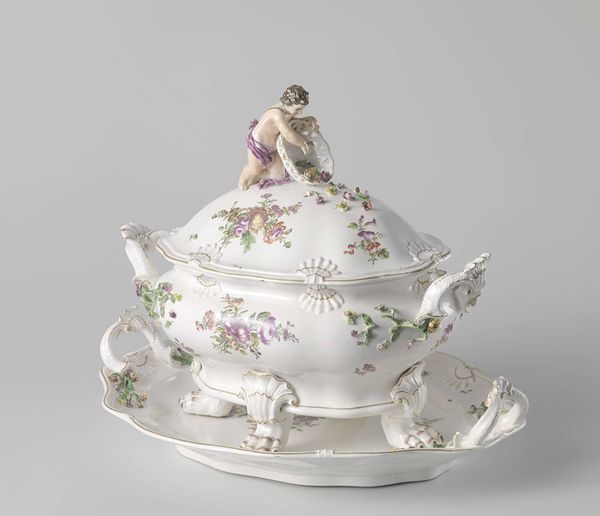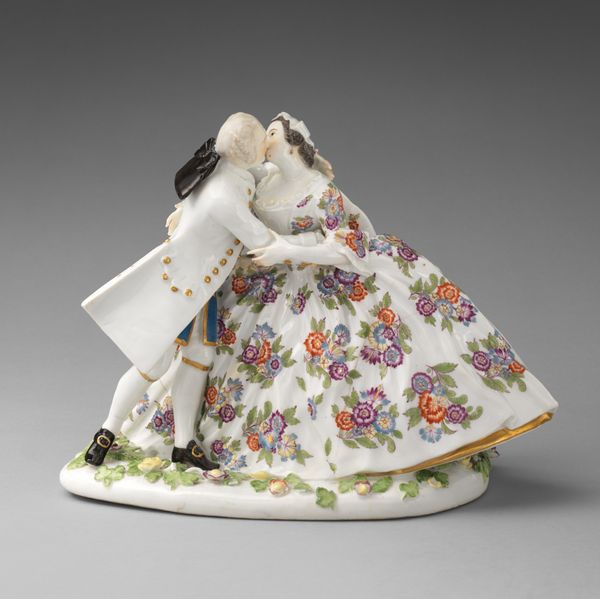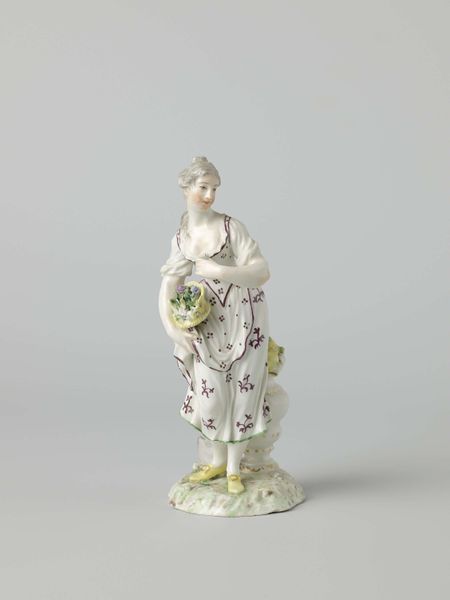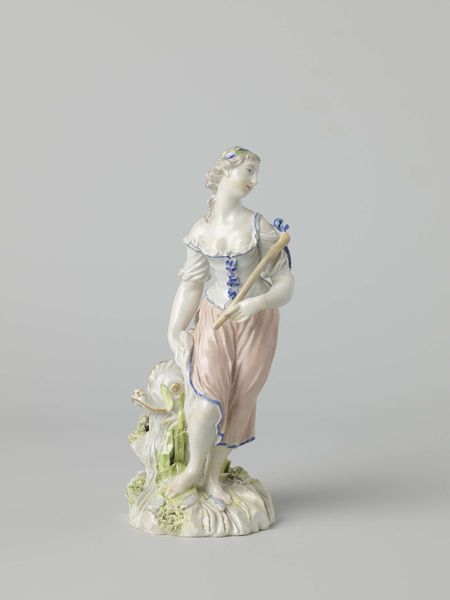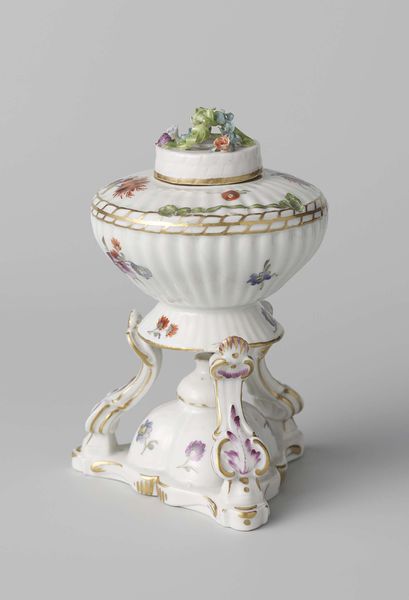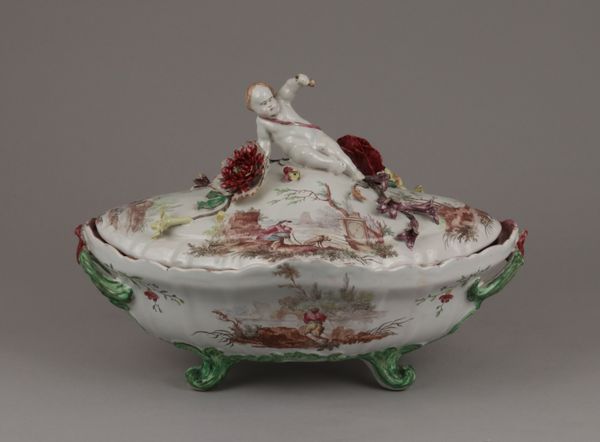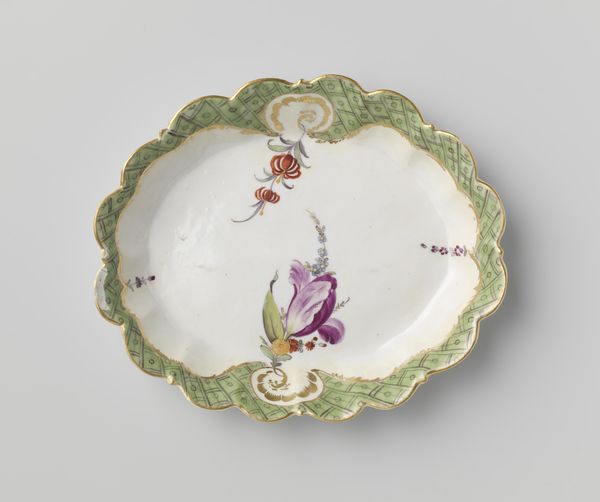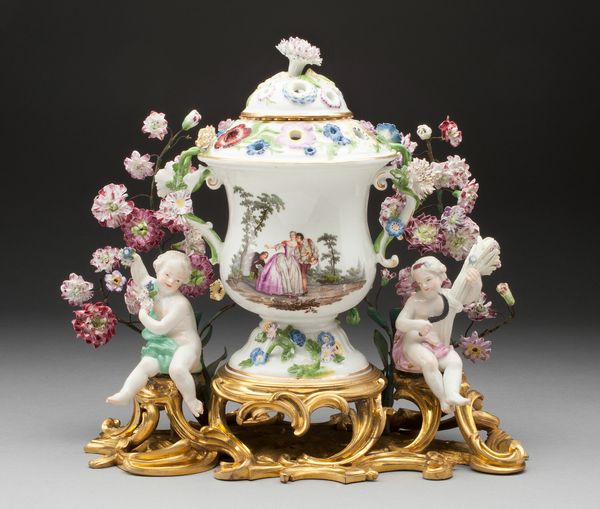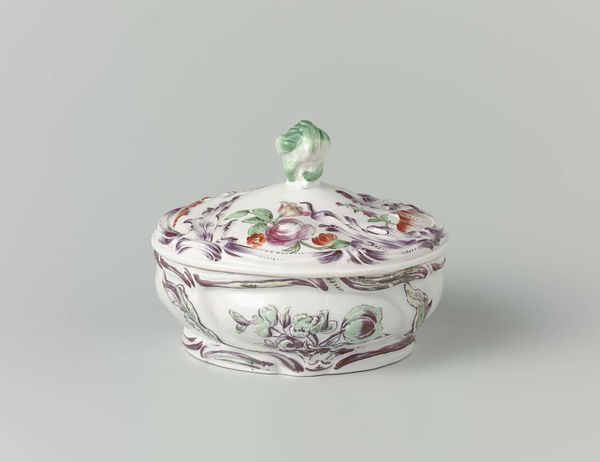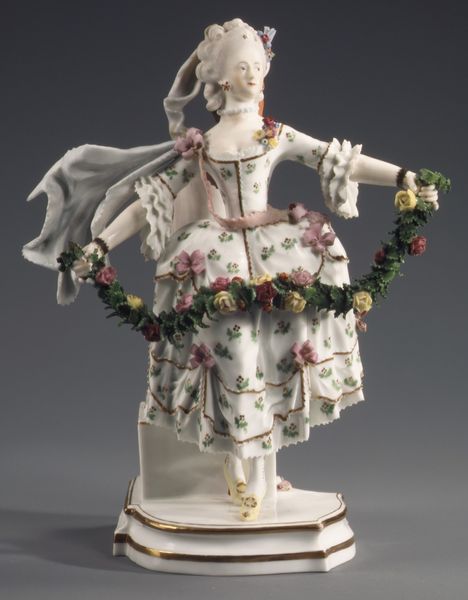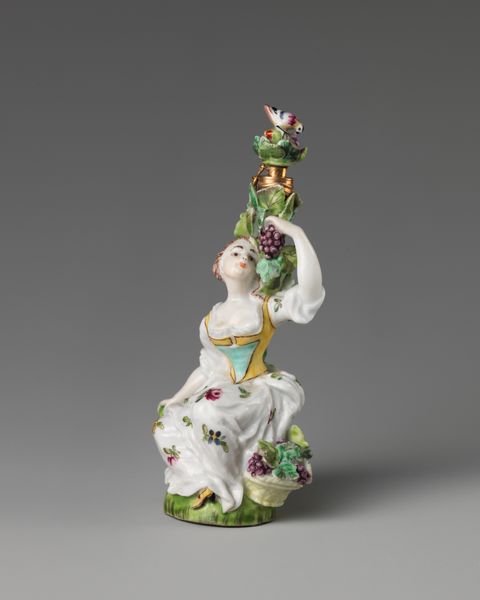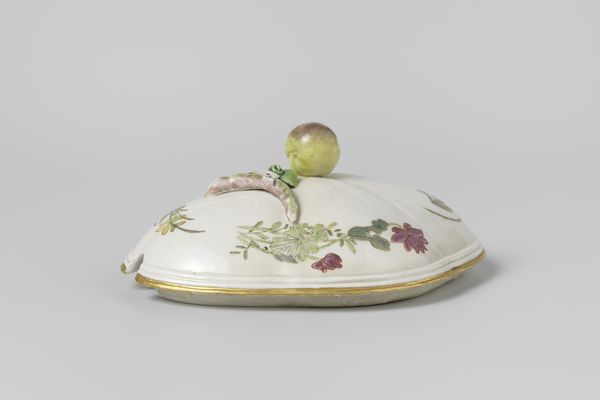
ceramic, porcelain, sculpture
#
ceramic
#
porcelain
#
sculpture
#
ceramic
#
decorative-art
#
rococo
Copyright: Rijks Museum: Open Domain
This tureen and stand was produced by the Weesper porseleinfabriek. These kinds of porcelain works are often treated as minor, decorative art, but they really illustrate the culture of elite consumption in Europe at the time. We see here a confluence of influences: the classical putto, or cherubic boy, combined with bright, almost cartoonish flowers. The porcelain industry in the Netherlands was propped up by the Dutch East India Company, which first imported porcelain from China and Japan, before local workshops started to develop their own styles. It’s clear that porcelain making as an institution was fundamentally tied to global trade and the creation of new markets for luxury goods. To understand this tureen, we might look at the records of the company, as well as trade statistics, to understand its place in the broader Dutch economy. It’s a reminder that even the most decorative objects were produced in particular social and institutional settings.
Comments
No comments
Be the first to comment and join the conversation on the ultimate creative platform.
